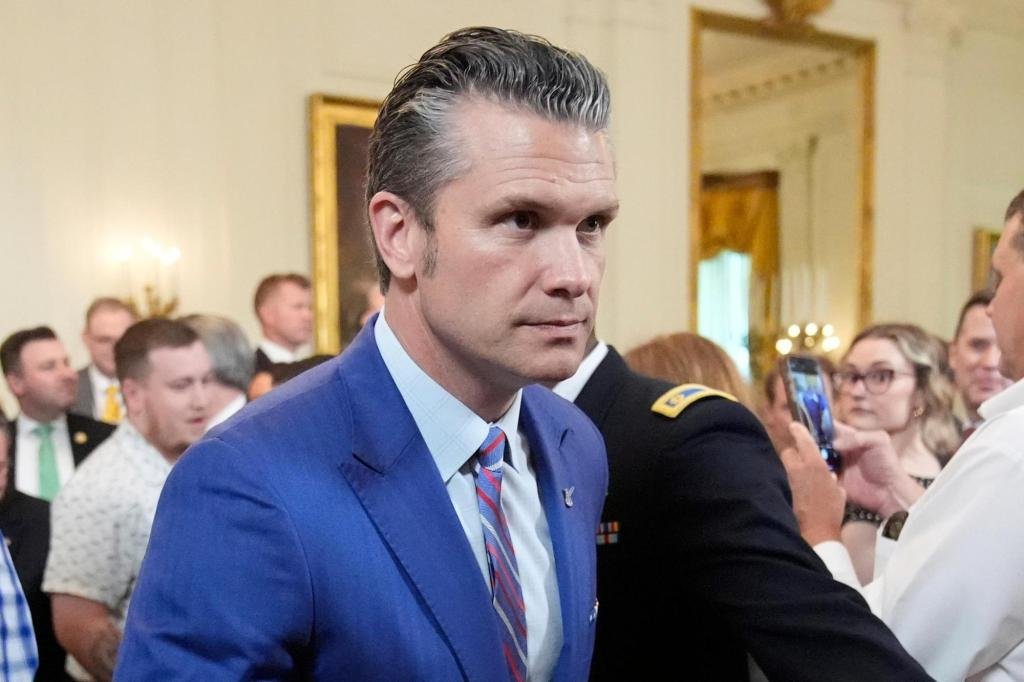Military Deployment in Los Angeles: A Double-Edged Sword
As the late afternoon sun bathed Los Angeles in a golden hue, a heavy silence enveloped the city. Thousands of protestors gathered outside the Immigration and Customs Enforcement (ICE) facility, their chants echoing against the high concrete walls. Among them stood Carlos Mendoza, a 37-year-old immigrant from Guatemala, holding a sign that read, “No More Walls.” He had fled violence in his homeland, only to find himself caught in the crosshairs of a tense standoff between protesters and federal troops. For him, the deployment of the U.S. military felt like a personal affront—an invasion of his newfound sanctuary.
Background of Militarization
In June 2025, President Donald Trump escalated tensions in a politically charged landscape by ordering the deployment of around 4,000 California National Guard troops and 800 active-duty Marines to Los Angeles. This move, ostensibly intended to quell protests against immigration raids, has ignited heated debate across the nation.
The deployment was met with immediate backlash from California Governor Gavin Newsom, who argued that federal troops should not be used for domestic policing. He expressed concerns that the military presence could exacerbate already existing tensions in communities that have been deeply affected by immigration policies.
Legal and Ethical Implications
The mobilization of military forces for domestic issues brings numerous legal challenges. According to legal scholar Dr. Emily Renshaw, a constitutional law expert at Stanford University, the implications of utilizing the Insurrection Act raise questions about the militarization of civilian law enforcement.
“Deploying military forces against civilians can set a dangerous precedent, particularly in a democratic society. The Insurrection Act should never be invoked lightly,” Renshaw stated during a recent forum on civil rights.
Despite the legal intricacies, military leaders have insisted that their primary role remains protective, primarily around federal buildings. Yet, historical precedent suggests a slippery slope; Marines have previously engaged in detaining civilians in the same city, raising further alarm.
Impact on State Resources
The timing of this military intervention could not have been worse. California entered its peak wildfire season, a period where state resources are already stretched thin. General Gregory Guillot, head of U.S. Northern Command, recently petitioned Defense Secretary Pete Hegseth to redeploy 200 National Guard troops back to wildfire mitigation efforts. The ongoing uncertainty over troop allocation presents a formidable challenge as the state braces for potentially catastrophic wildfires.
- Displacement of Resources: 200 troops could have assisted in wildfire suppression.
- Community Vulnerability: More than 1,000 evacuations were recorded in just one wildfire incident last year.
- Polarized Responses: Local authorities have expressed fear that troop presence could deter communities from seeking help during emergencies.
The Political Landscape
In congressional hearings, lawmakers questioned Hegseth about the potential for extending military deployments beyond California. While he evaded direct answers, the tension was palpable. Gen. Dan Caine, the chairman of the Joint Chiefs of Staff, tempered the anxiety of lawmakers, stating, “I don’t see any foreign, state-sponsored folks invading, but I’ll be mindful of the fact that there have been some border issues.” This public ambivalence has left many observers feeling uneasy.
Political analysts contend that the military deployment is fundamentally a symbiotic relationship between fear and power. “It aligns with Trump’s narrative of an ‘invasion,’ which serves to rally his base but alienates a significant portion of the electorate who see this as a reckless move against vulnerable communities,” argued Dr. Alan Slater, a political analyst and author of “The New American Militarism.” His research indicates that such deployments often reflect broader anxieties surrounding immigration and national security.
A Complex Narrative
As frustration mounts, activists continue to voice concerns over the military’s presence, not only at protests but also throughout immigrant communities. Carlos Mendoza’s voice, intertwined with thousands of others, resonates with the urgency of those seeking safety and accessibility to essential services in their adopted homes. While the state’s resources are being diverted to enforce federal policies, a deeper issue looms—how to balance the preservation of civil liberties with national security imperatives.
The complexities surrounding military engagement in domestic affairs highlight the need for a more nuanced discussion on the role of government in times of unrest. In his pursuit of political capital, the Trump administration seems willing to blur the lines, but as Los Angeles faces the dual threats of wildfire and civil unrest, the implications of such military deployments will linger long after the smoke has cleared. The future remains uncertain, not just for communities in Los Angeles but for the fabric of democracy itself, raising the question: what cost are we prepared to pay for security?





